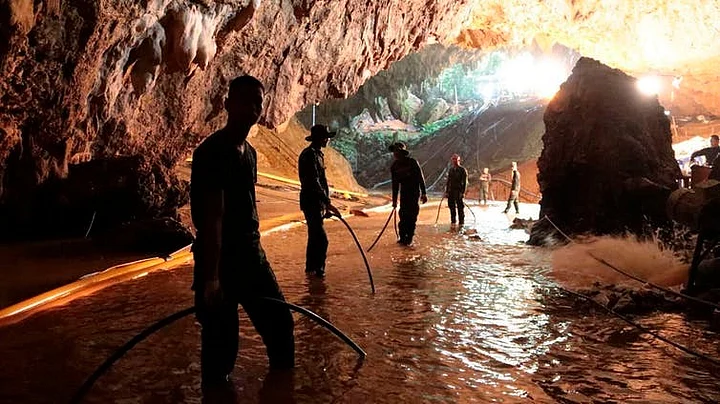Almost like a scene straight out of some kind of a Hollywood movie, the Thai cave rescue made headlines all around the world as to how the concerted effort of people from around the globe saved the lives of 13 people.
But, amidst all the faces and the effort that were involved in this successful rescue, technology and equipment used by those people too had a big role to play in aiding this rescue mission.
The most surprising bit was that it wasn’t just the high-tech gizmos, but also rudimentary technology like homemade radios which also helped rescue the boys.
It’s the world we are living in, everything is running on technology. So here’s a look at the techie side of this rescue mission.
Indians to the Rescue
Not many are aware of this fact but there was an Indian connection to this rescue as well. Two Indian engineers who were part of a seven-member team belonged to Kirloskar Brothers Limited, a Pune-headquartered pump manufacturing firm, which was called into action by the Thai government for this rescue mission.
Kirloskar provided four specialised and powerful high capacity dewatering pumps which were flown down to Thailand from the Kirloskarvadi plant in Maharashtra. The company's experts were available at the site offering advice on how to use the dewatering pumps.
Apart from the Indian hand, there was another Thai oil exploration company which provided pumps and pipes and helped drain out almost up to 120 million litres of water in just 75 hours.
And Then There Were The Machines
Drones can be used for other purposes apart from shooting movies and spying and the rescue mission proved to be a perfect testing ground for the gizmo.
There were three aerial drones that were deployed to track down the people stuck and these drones were equipped with 30x optical zoom lenses and thermal cameras.
These kind of high-tech drones are mostly deployed while carrying out high-priority and risky inspections of drilling sites which are mostly inaccessible. The most crucial role that the drone played was creating a 3D aerial map of the area and then revealing potential entry points which could be accessed.
An oil and gas exploration company called PTT Exploration and Production also supplied a pair of robots which could go underwater.
These robots were in their research stage and came equipped with sonar scanners to create an underwater map of the cave, which divers were supposed to use, but because of muddy conditions and poor visibility, things didn't come through.
After consulting with the SEAL team present at the location, people learned that mobility would be an issue for these robots.
Radio Them In
Communication posed a big problem during the rescue, which is why most of the rescuers were dependent on communication devices like radios with mesh technology as regular radios are bound to fail in complex environments.
A UK company by the name Entel developed these radios, which run on software that helps broadcast and use the same as a relay simultaneously. This system enabled them to communicate over a range of up to two miles without the need to have direct line of sight or any physical infrastructure like huge radio towers.
These radios didn’t need any kind of programming as they worked and connected automatically.
In hindsight, there was a British team that went into the caves and were using something called HeyPhones, which is a simpler and older form of communication.
These are bulky clunky radio systems that use ultra-low frequency waves to communicate through hundreds of metres of solid rock.
To be honest, this is just the cream of all the tech that was used to make the rescue mission a success. The fact of the matter is that technology — no matter how flawed it may be — has its perks. The 13 that were saved in Thaliand is a very small number compared to the thousands technology has helped save till now. And, will keep saving for sure.
